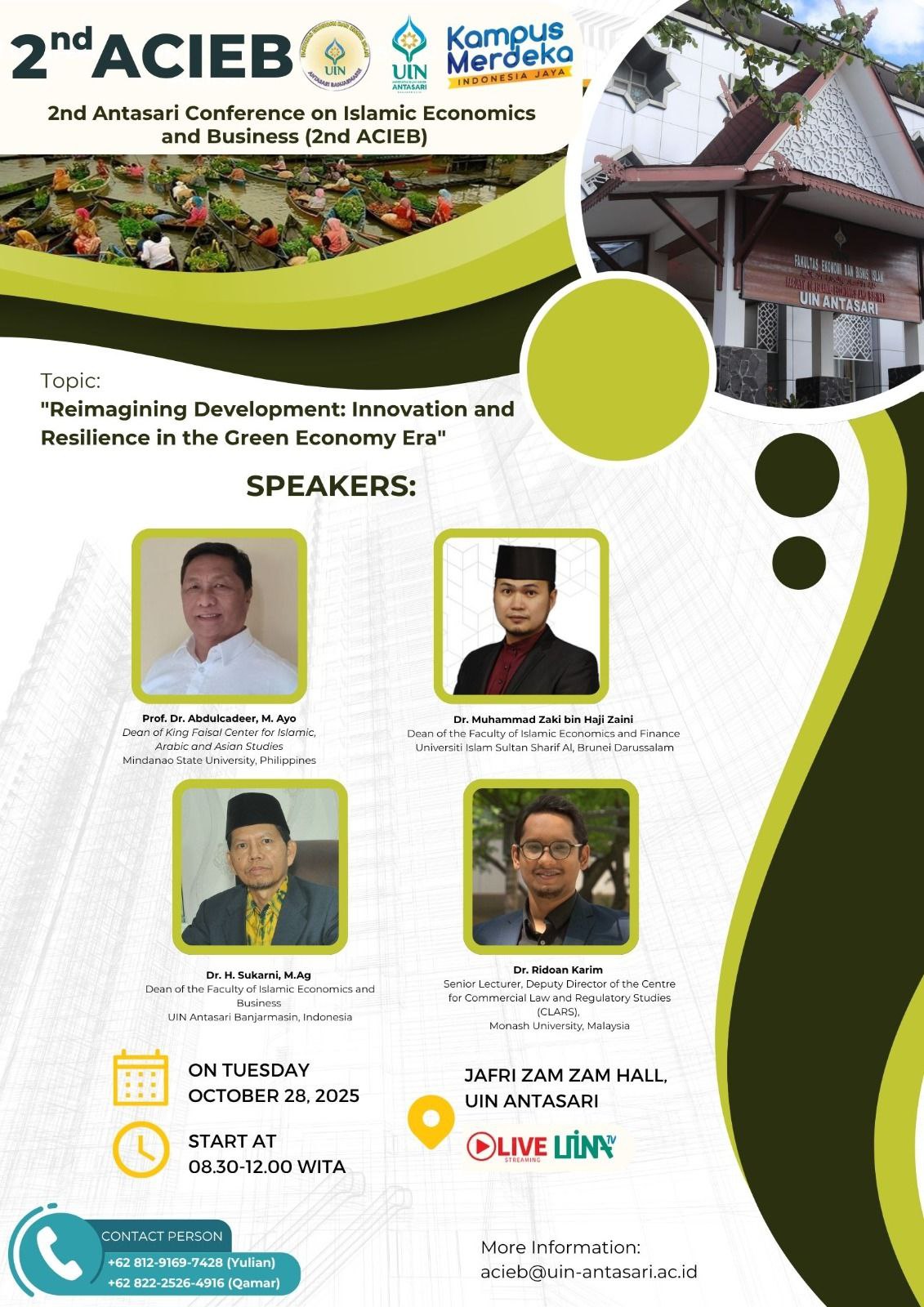Analysis of the Supply Chain and Added Value of Brown Sugar by Artisans in Hulu Sungai Tengah Regency
Keywords:
Supply Chain, Brown Sugar, Artisans, Descriptive QualitativeAbstract
This study aims to analyze the brown sugar supply chain among artisans in Hulu Sungai Tengah (HST) Regency, focusing on the relationships between producers, distributors, and marketers. This study applied a qualitative descriptive approach, with data collected from in-depth interviews with brown sugar artisans in Barabai and Pandawan subdistricts, as well as field observations conducted in previous studies. Data analysis was carried out through the stages of reduction, data presentation, and conclusion drawing to describe the patterns of raw material, product, and information flows in the brown sugar supply chain system. The results show that the brown sugar supply chain structure in Hulu Sungai Tengah Regency consists of four main actors, namely palm sap farmers, brown sugar artisans, collectors, and market traders. The relationship between actors is still informal and depends on trust, without an institutional system or standard price contracts. Artisans play an important role in the value-added process because they process raw sap into marketable products through stages that are time-consuming and require labor and skill. However, limitations in raw palm sap, dependence on collectors, and a lack of production facilities mean that supply chain efficiency is still suboptimal. These findings emphasize the importance of integration between actors in the brown sugar supply chain system in order to strengthen the position of producers, increase the stability of raw material supplies, and expand distribution networks so that the local brown sugar industry can develop sustainably.References
Adi, M. (2021). Analisis efisiensi produksi pada industri gula merah tradisional. Jurnal Agroindustri Indonesia, 9(1), 32–41.
Agus, S. (2020). Analisis pemasaran dan prospek pengembangan gula merah aren di daerah pedesaan. Jurnal Agribisnis Tropika, 8(2), 45–56.
Chopra, S., & Meindl, P. (2016). Supply chain management: Strategy, planning, and operation (6th ed.). Pearson Education.
Christopher, M. (2016). Logistics and supply chain management (5th ed.). Pearson UK.
Creswell, J. W. (2018). Qualitative inquiry and research design: Choosing among five approaches (4th ed.). Sage Publications.
Granovetter, M. (1985). Economic action and social structure: The problem of embeddedness. American Journal of Sociology, 91(3), 481–510.
Heizer, J., Render, B., & Munson, C. (2020). Operations management: Sustainability and supply chain management (13th ed.). Pearson Education.
Efendi, M. (2017). Kajian produksi dan distribusi gula merah aren di Kalimantan Selatan. Jurnal Pembangunan Wilayah dan Perdesaan, 3(1), 25–33.
Kaplinsky, R., & Morris, M. (2001). A handbook for value chain research. Institute of Development Studies.
Lambert, D. M., & Cooper, M. C. (2000). Issues in supply chain management. Industrial Marketing Management, 29(1), 65–83.
Lincoln, Y. S., & Guba, E. G. (1985). Naturalistic inquiry. Sage Publications.
Miles, M. B., & Huberman, A. M. (1994). Qualitative data analysis: An expanded sourcebook (2nd ed.). Sage Publications.
Porter, M. E. (1985). Competitive advantage: Creating and sustaining superior performance. Free Press.
Rahmawati, N. (2019). Rantai pasok dan nilai tambah pada produk olahan lokal: Studi kasus industri gula kelapa di Banyumas. Jurnal Sosiohumaniora, 21(3), 213–224.
Rukmana, R. (2018). Aren: Budidaya dan pengolahan hasil. Kanisius.
Nurani, M. F., Arabi, I. ., & Anwary, A. . (2025). Sustainability analysis of the palm sugar industry in Hulu Sungai Tengah Regency: Perspectives on local economy, public policy, and labor law. Journal of Islamic Economics Lariba, 11(2), 847–878. https://doi.org/10.20885/jielariba.vol11.iss2.art8
Wibowo, T., & Hidayat, N. (2020). Strategi peningkatan daya saing produk pangan lokal melalui efisiensi rantai pasok. Jurnal Teknologi dan Industri Pangan, 31(2), 89–98.

